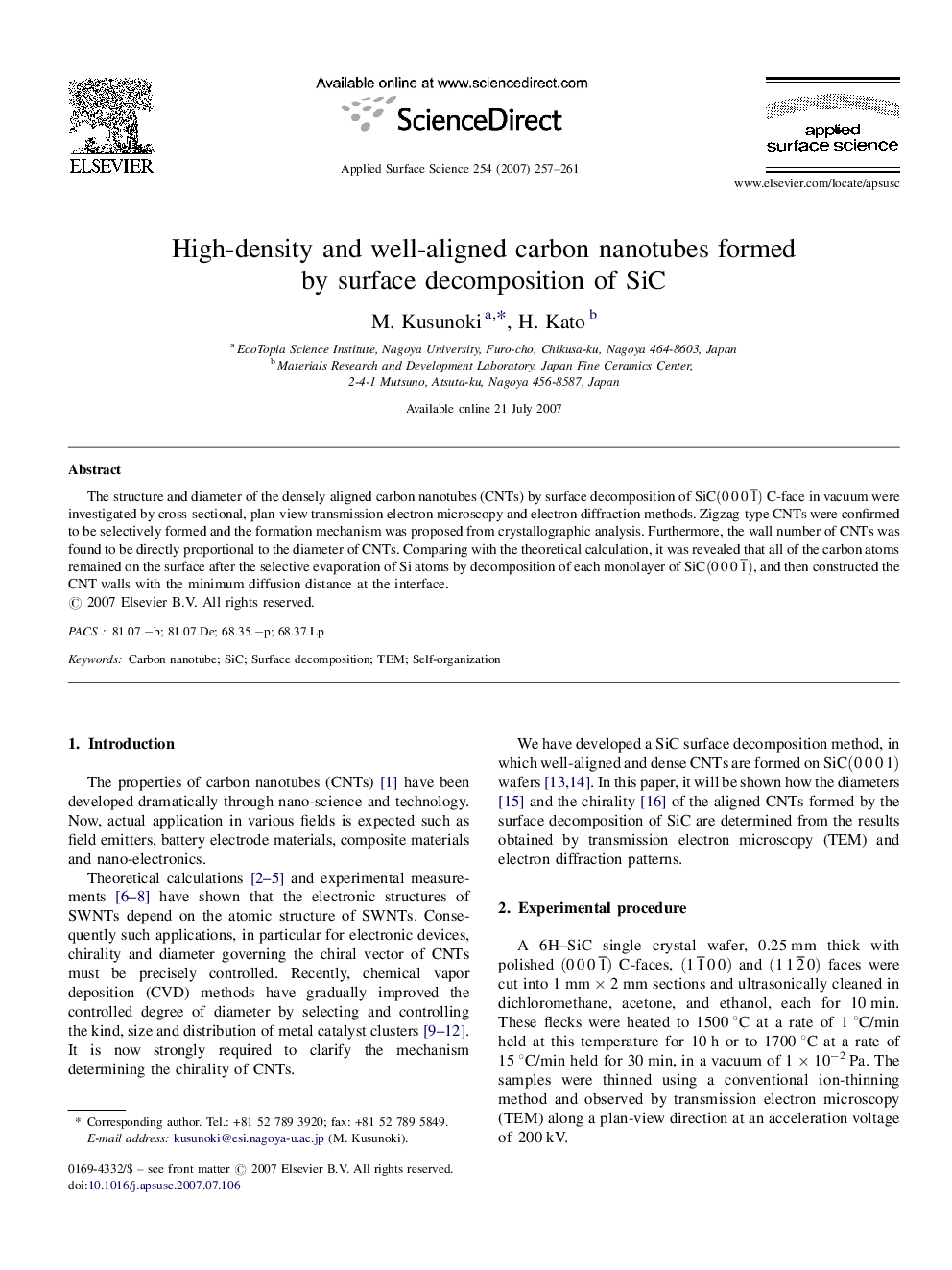| Article ID | Journal | Published Year | Pages | File Type |
|---|---|---|---|---|
| 5368341 | Applied Surface Science | 2007 | 5 Pages |
The structure and diameter of the densely aligned carbon nanotubes (CNTs) by surface decomposition of SiC(0001¯) C-face in vacuum were investigated by cross-sectional, plan-view transmission electron microscopy and electron diffraction methods. Zigzag-type CNTs were confirmed to be selectively formed and the formation mechanism was proposed from crystallographic analysis. Furthermore, the wall number of CNTs was found to be directly proportional to the diameter of CNTs. Comparing with the theoretical calculation, it was revealed that all of the carbon atoms remained on the surface after the selective evaporation of Si atoms by decomposition of each monolayer of SiC(0001¯), and then constructed the CNT walls with the minimum diffusion distance at the interface.
